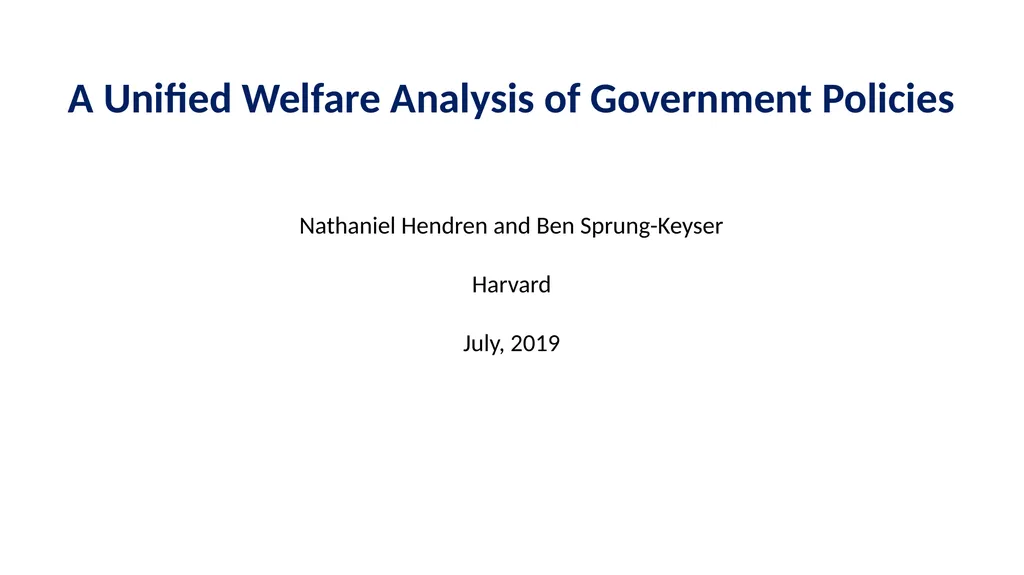
A Unified Welfare Analysis of Government Policies
Author: liane-varnes | Published: 2025-05-29
Description: A Unified Welfare Analysis of Government Policies Nathaniel Hendren and Ben Sprung-Keyser Harvard July, 2019 What government policies do the most to improve social welfare? Should we spend more (or less) on health insurance? Should we raise
Download Presentation
Download the PPT/PDF: Download
Transcript:
Loading transcript…